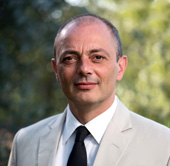The Behavioural Economics of Things
 In this guest column, Antony Giorgione reveals 10 ways that behavioural sciences and marketing can be used to guide us to make choices both expected and unexpected.
In this guest column, Antony Giorgione reveals 10 ways that behavioural sciences and marketing can be used to guide us to make choices both expected and unexpected.
“Labels matter, and the mislabelling of applied behavioural sciences as behavioural economics has consequences”, said Daniel Kahneman on the subject for which he won a Nobel Prize.
The term ‘behavioural economics’ has come to be associated with a seemingly counter-intuitive understanding and application of psychology into diverse disciplines for improved efficiencies.
It presently embodies a range of labels: behaviourally-informed intervention, marketing sciences, law and emotion, prospect theory, homo reciprocans, nudging, freakonomics, predictable irrationality, lateral thinking, and so on.


Interesting article. It is a pure coincidence, but I just read an article casting some doubts on the fruit jam example:
https://jasoncollins.org/2016/05/11/bad-behavioural-science-failures-bias-and-fairy-tales/comment-page-1/#comment-14447
Would be interested to hear about your thoughts on this issue.
Hi Laurent,
Yes, I read something similar about this study when researching this piece. I think it goes to a broader issue with what I understand to be the reproducibility crisis presently challenging the peer-review process;
http://journals.plos.org/plosm.....ed.0020124
http://jama.jamanetwork.com/ar.....id=1902230
I’m trying to choose my language carefully with my articles; none of this stuff is necessarily ‘universal’ or applicable across all contexts. Having said that, I still believe there is some truth to the idea that too much choice inhibits decision-making – from my own experience, giving some clients too many creative options is one example that comes to mind. Perhaps the shift in the power dynamic between brands and the major supermarkets might be another (albeit with other significant factors also in play).
BTW, that is a fantastic article. Many thanks for the link. I would agree with paragraph 5 from commenter Jason Le Nestour in this specific case.
Great article mate.
Simple. Anchored. Elegant.
Well played.
Thanks Ashton. Appreciate your kind compliments.
Sometimes I wake up screaming. How does your article relate to this?
@Ryan: You might find help here: https://www.mensline.org.au/